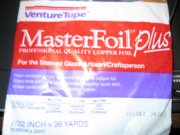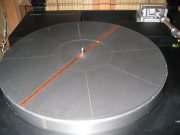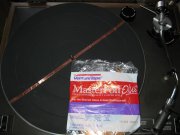Wheel-right
Chief Journeyman
While looking around my girlfriends workroom where she does stained glass I came across this product,

 Copper Foil Wrap and put some on my turntable mats. Thin stuff 0.025mm so it even allows enough room to go in the spindle hole and I wrapped it under the whole mat like the top. Makes a complete ground connection to the ground on the back of the pre-amp and seems to work well at reducing static electricity on the vinyl. Yippee!
Copper Foil Wrap and put some on my turntable mats. Thin stuff 0.025mm so it even allows enough room to go in the spindle hole and I wrapped it under the whole mat like the top. Makes a complete ground connection to the ground on the back of the pre-amp and seems to work well at reducing static electricity on the vinyl. Yippee!


 Copper Foil Wrap and put some on my turntable mats. Thin stuff 0.025mm so it even allows enough room to go in the spindle hole and I wrapped it under the whole mat like the top. Makes a complete ground connection to the ground on the back of the pre-amp and seems to work well at reducing static electricity on the vinyl. Yippee!
Copper Foil Wrap and put some on my turntable mats. Thin stuff 0.025mm so it even allows enough room to go in the spindle hole and I wrapped it under the whole mat like the top. Makes a complete ground connection to the ground on the back of the pre-amp and seems to work well at reducing static electricity on the vinyl. Yippee!